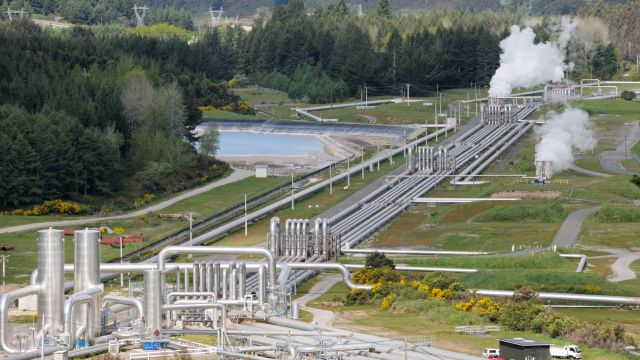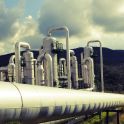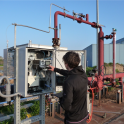
Geo-Sys
GRS carried out an interdisciplinary systems analysis regarding geothermal energy recovery – or shortly "GeoSys" - with funds provided by the Federal Environment Ministry. In GeoSys, the researchers did identify and describe in a first step all elements of the "geothermal energy recovery" system. This includes e.g. ecological aspects, technical aspects (e.g. reliability), processes and impact factors (e.g. emissions, industrial safety) and the legal framework. In further steps, all these parts of the system are assessed and analysed. The aim is to identify research needs and possible regulatory gaps. In the long run, the project is to contribute to improving the availability and productivity of deep geothermal energy.
Work with respect to legally protected goods: man, soil, water, and material goods
In GeoSys, GRS pursues an approach that concentrates on legally protected goods. This means that the focus of the analyses is on the legally protected goods ‒ in this context man, soils, water, air, climate and materials goods as well as cultural landscapes. Legally protected goods are protected by corresponding acts of law. For example, surface waters and the groundwater are amongst others protected by the Federal Water Act, and the sustainable assurance of the functions of the soil are protected by the Federal Soil Protection Act.
Essential regulations regarding the exploitation of geothermal energy ("terrestrial heat") as a natural resource can be found above all in the Federal Mining Act. The aim of the Federal Mining Act is in particular to regulate and promote the discovery, exploitation and processing of natural resources by sparing and careful handling of the land to security the supply of raw materials, to ensure the safety of operations and of those working in the field of mining, and to enhance the protection against the hazards involved in mining activities.
The researchers assess which legally protected goods and impact factors can be classified as particularly relevant or less relevant in connection with geothermal energy recovery, which are already adequately protected by legal and technical provisions, and which may possibly require new regulations. Here is an example: the impact factor "visibility of the plant" is already adequately regulated with regard to the legally protected good "landscape". It is therefore not considered any further.
Setting new impulses: researchers apply PSA to geothermal energy
Amongst other things, the experts at GRS apply a method in their analyses that is particularly suited to assessing complex industrial facilities: the so-called probabilistic safety analysis (PSA). Probabilistic assessments allow the numerical calculation of a risk. In contrast to deterministic "if-then" analyses, probabilistic methods allow the indication of the range of a probability.
The starting point for a probabilistic safety analysis is the broad spectrum of events that may lead to a deviation from the normal condition of a system or facility. In so-called event-trees, the different scenarios of such sequences are played trough and their frequency is calculated. The results provide a reliable basis for making decisions about the need for and use of safety-related improvements.
Falling back on experience in the safety analysis
As in many other industries, geothermal energy recovery also produces residuals apart from the proper products (e.g. heat/electricity). It must be ensured that when these are recycled or disposed of , there will be no detrimental effects on man or the environment. Hence GRS examines and assesses the possible load paths in GeoSys. In doing so, GRS draws on its long-standing experience in the development of realistic exposure scenarios. Apart from that, the exchange of information with authorities and industry plays an important role for the application-oriented research in GeoSys, e.g. for the comparison of data from the operation of the plants.
Project highlights Environment and Energy

The aim of the integrated Geo-Dat project was to set up a thermodynamic database for the modelling of complex geochemical processes in deep geothermal layers of the North German Basin. Results from the integrated project are incorporated into the thermodynamic reference database THEREDA.

The share of renewable energies in the German energy mix is rising steadily. Deep geothermal energy is also already contributing to more climate-friendly energy. GRS researchers, together with Energie Baden-Württemberg AG (EnBW) and the Geosciences Centre of the University of Göttingen (GZG), have developed and successfully tested new methods and techniques in the BMWi-sponsored ANEMONA project to improve the economic efficiency of geothermal power plants.
